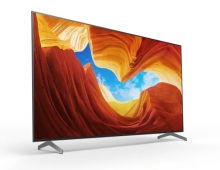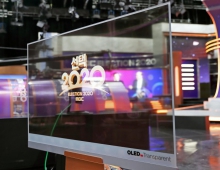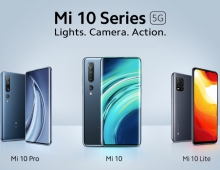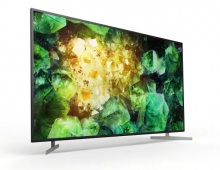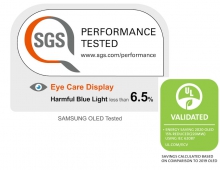
Samsung and LG Change TV Priorities
Korean TV panel makers are in the process of adjusting their priorities, due to difficulties in commercializing AMOLED TV, but also to the fact that the outlook for 4Kx2K (ultra-high definition) TV is becoming more promising.
Since the beginning of 2012, when both Samsung and LG Display demonstrated 55" AMOLED TV at CES, both have been claiming they will mass-produce large size AMOLED TVs panel within the year. However the commercialization plan has been delayed repeatedly. At the same time, aggressive pricing of some large size LCD TV on Black Friday and the resulting sales shows that, for many end users, a larger and cheaper LCD TV is more attractive than a high-end, slim, and fancy OLED TV. The emphasis on AMOLED TV has been reduced, and the new focus is on the high definition.
According to David Hsieh, vice president, Greter China Market for DisplaySearch, a fundamental challenge for AMOLED TV remains manufacturing yield. Pilot production indicates that 55" AMOLED TV panel straight yield (without repair) is in single digits due to instability in the large backplanes (using LTPS or oxide TFT). Total yield (after repair) is estimated to be less than 30%. Finally, frit encapsulation is too fragile for large area TV, and is resulting in reduced panel life.
Because of the high manufacturing costs, 55" AMOLED TV set prices are expected to be in the $10K range, a very high price compared to comparable LCD TVs. Also, due to the lifespan and reliability issues, after service costs are not predictable. There may be a need for a large advertising and education campaign to highlight AMOLED?s advantages compared to LCD TV.
After IFA 2012, Korean panel makers lost some confidence in AMOLED, and began to feel that they could not justify a further investment into capacity expansion for AMOLED. At the same time, the visual quality of 4Kx2K became clearer to consumers. For panel makers, 4Kx2K LCD TV seems to be easier to manufacture than 4Kx2K AMOLED TV.
In 2013, the Korean TV panel makers are expected to mass produce UD LCD TVs and demonstrate their UD AMOLED TV models in trade shows. These models will reach mass production one year later, according to Display Research.
According to David Hsieh, vice president, Greter China Market for DisplaySearch, a fundamental challenge for AMOLED TV remains manufacturing yield. Pilot production indicates that 55" AMOLED TV panel straight yield (without repair) is in single digits due to instability in the large backplanes (using LTPS or oxide TFT). Total yield (after repair) is estimated to be less than 30%. Finally, frit encapsulation is too fragile for large area TV, and is resulting in reduced panel life.
Because of the high manufacturing costs, 55" AMOLED TV set prices are expected to be in the $10K range, a very high price compared to comparable LCD TVs. Also, due to the lifespan and reliability issues, after service costs are not predictable. There may be a need for a large advertising and education campaign to highlight AMOLED?s advantages compared to LCD TV.
After IFA 2012, Korean panel makers lost some confidence in AMOLED, and began to feel that they could not justify a further investment into capacity expansion for AMOLED. At the same time, the visual quality of 4Kx2K became clearer to consumers. For panel makers, 4Kx2K LCD TV seems to be easier to manufacture than 4Kx2K AMOLED TV.
In 2013, the Korean TV panel makers are expected to mass produce UD LCD TVs and demonstrate their UD AMOLED TV models in trade shows. These models will reach mass production one year later, according to Display Research.


